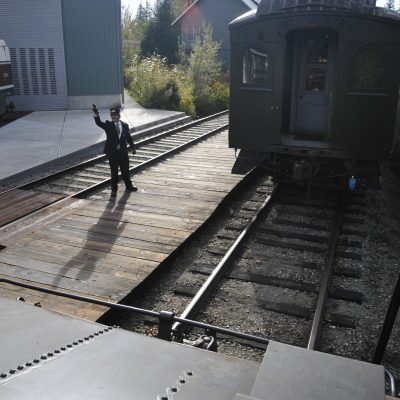Freight trains have long been an important part of American transportation. It is important that freight from one destination is collected and sent to the right destination. But how exactly do these trains come together?

Though the Museum does not operate freight trains, train crews still use hand signals to assemble the Museum’s passenger trains.
Before the internet and television, railways used promotional films to teach. Their subjects were wide ranging, from safety presentations to informational documentaries. Of course, they were not above the creation of promotional films about the scenic wonders and experiences to be found along their lines as well!
In the 1950s, the Atchison, Topeka & Santa Fe Railway produced a short film about how freight cars were collected and built into freight trains. While the Santa Fe never ran near the Pacific Northwest (Route 66 generally follows Santa Fe’s route), the information presented here would be much the same for the railways that did.
Some of the procedures seen are no longer used. Computers have taken over much of the paperwork; radios are much more prevalent, and the iconic railroad caboose have been replaced by end-of-train devices. Others procedures are still occasionally used. Flat switching, such as pushing or “kicking” cars, is still occasionally used by big railroads, but its use is discouraged by the Federal Railroad Administration. Blue flag use to protect workers is still heavily used by railways, including the Museum!

